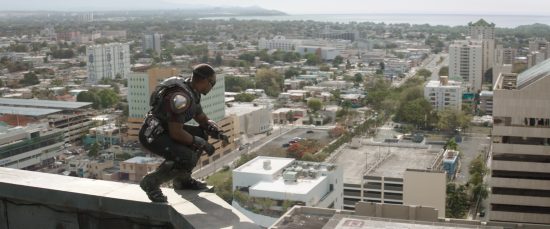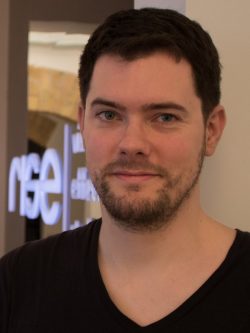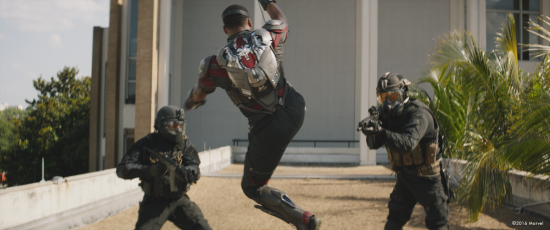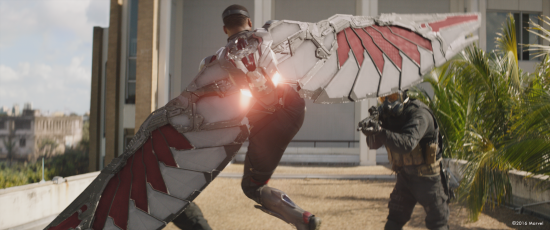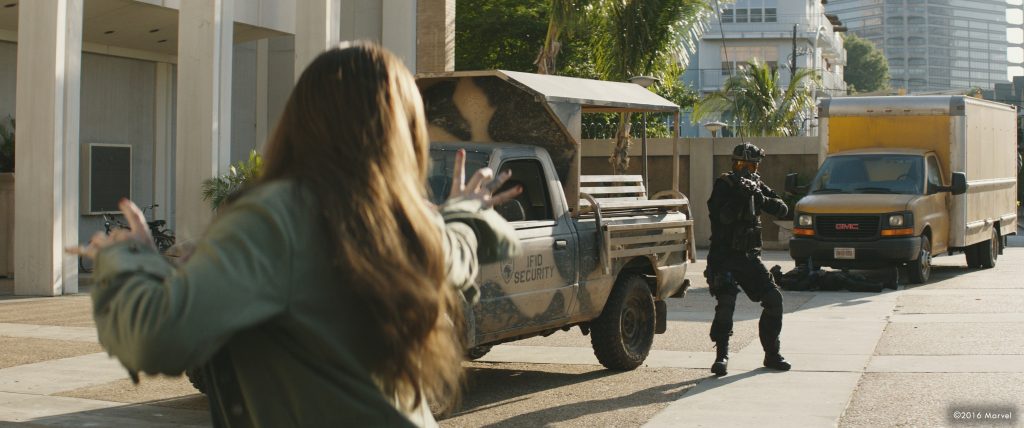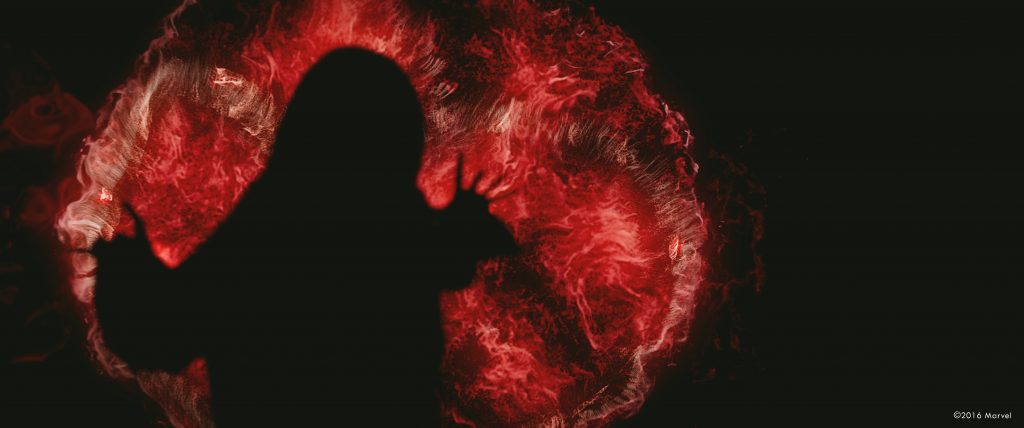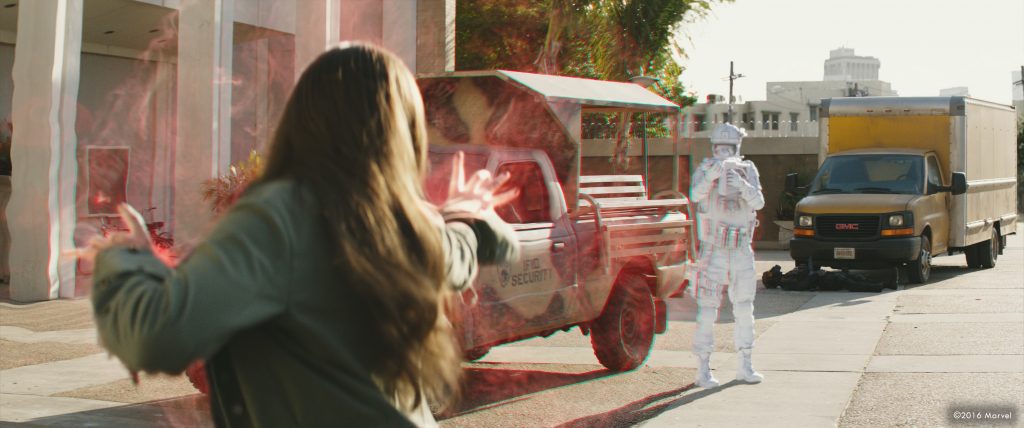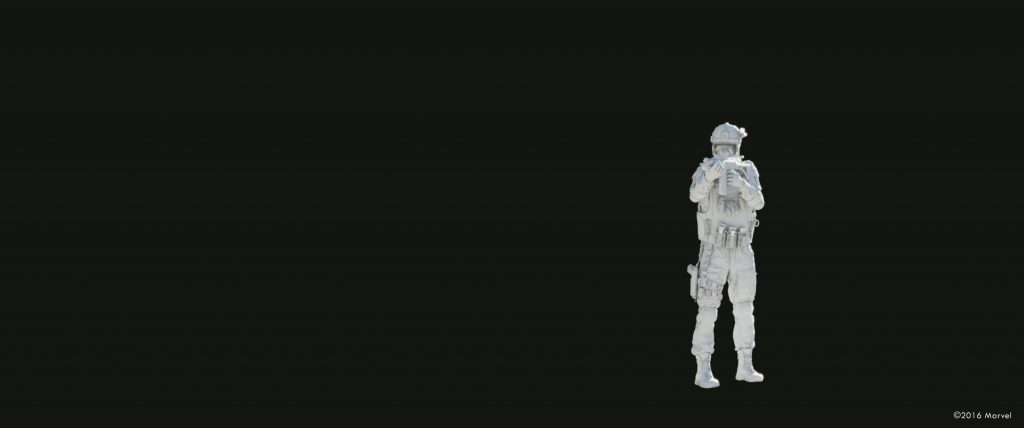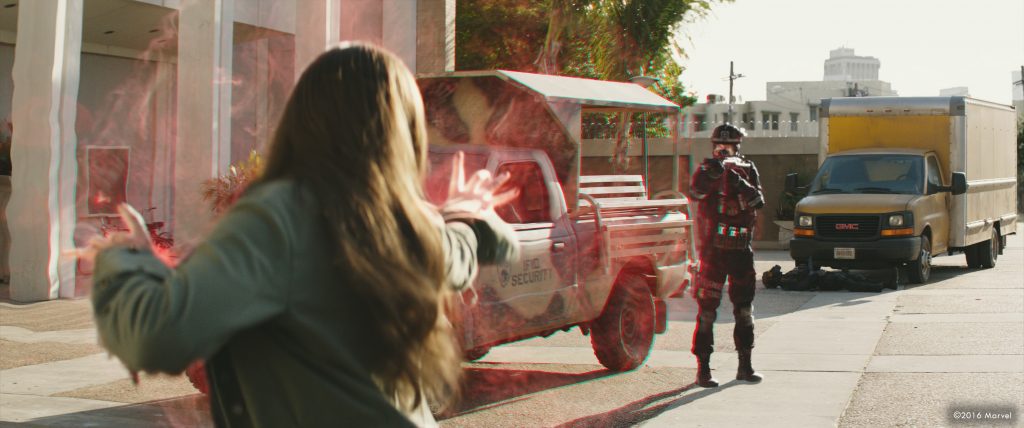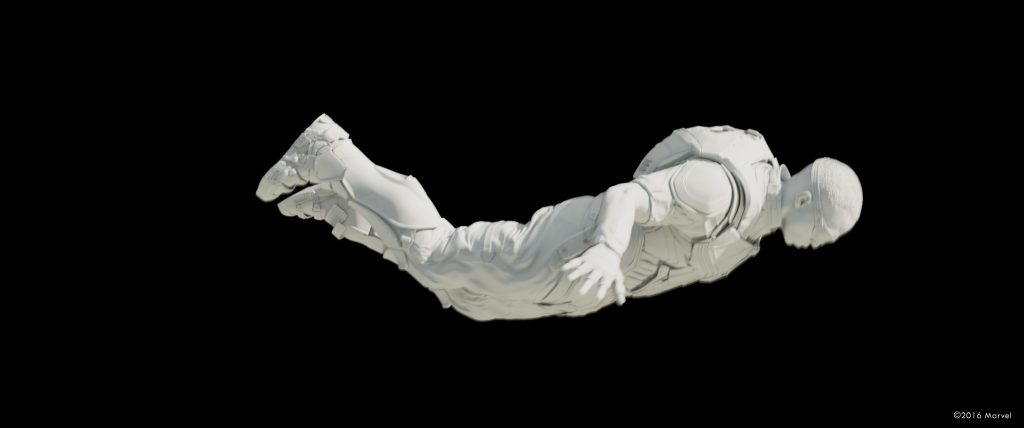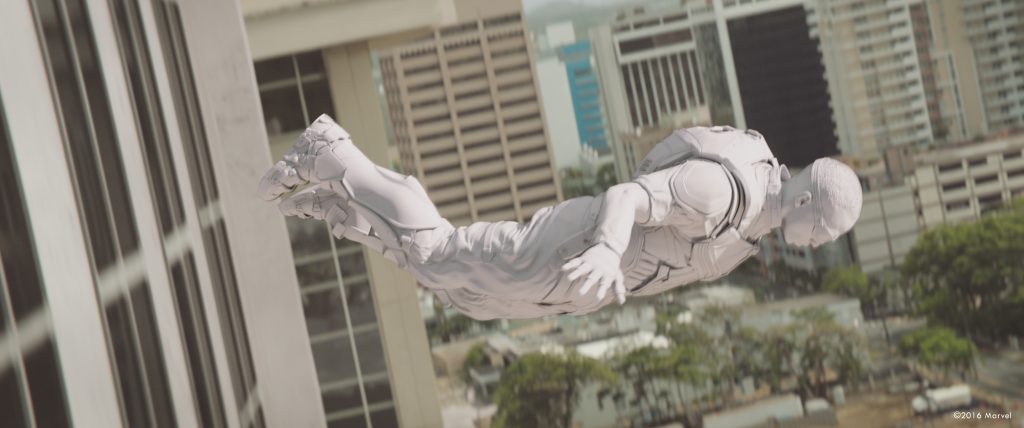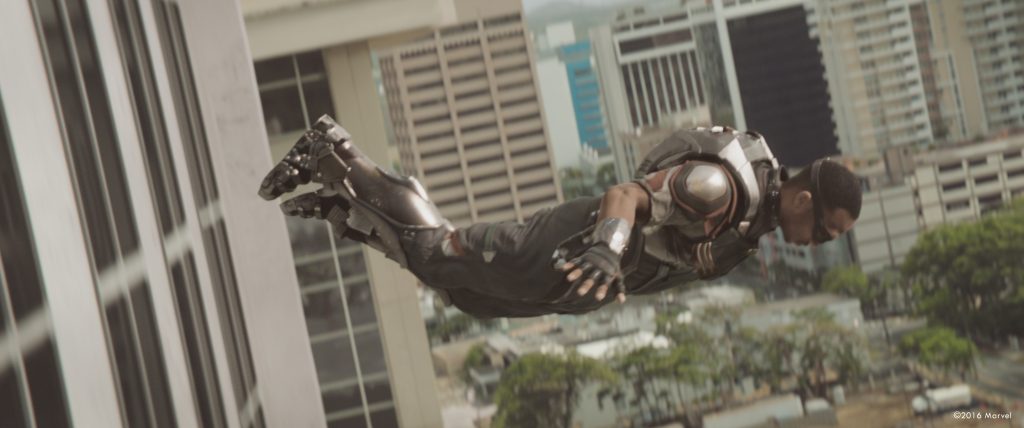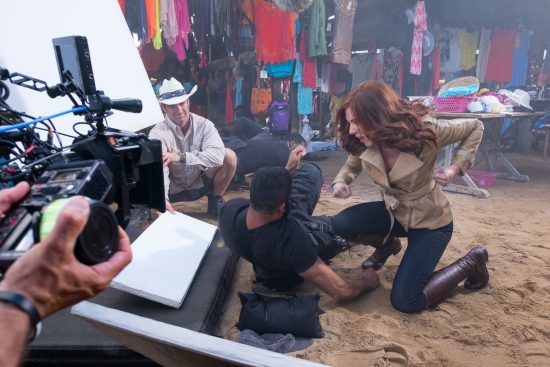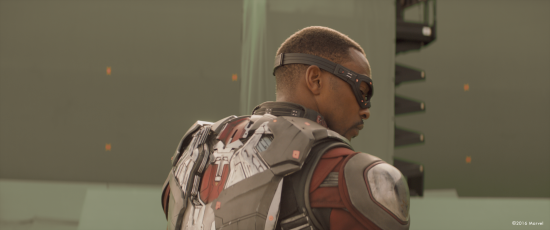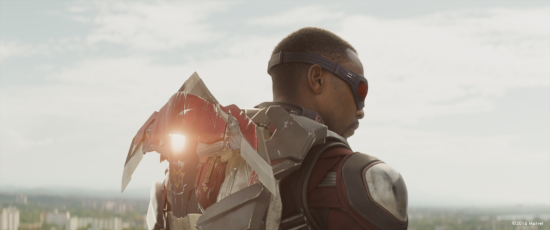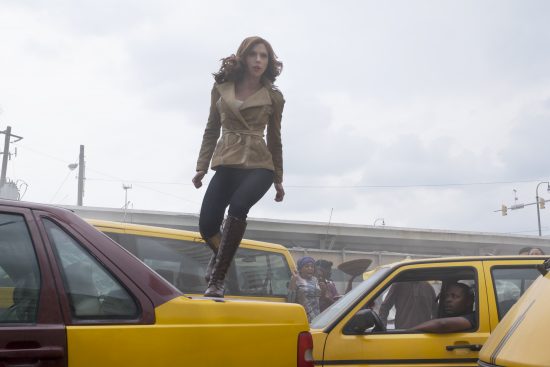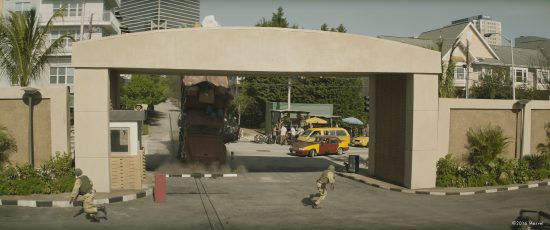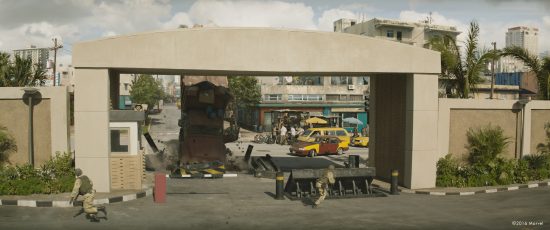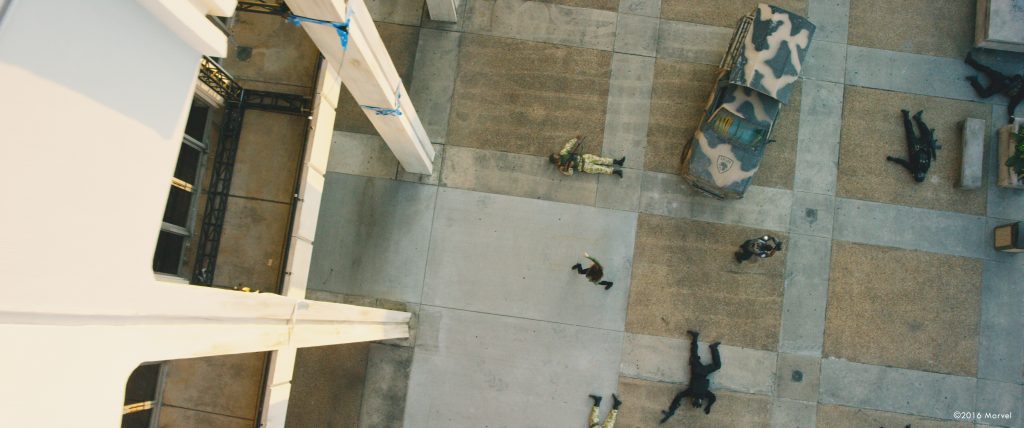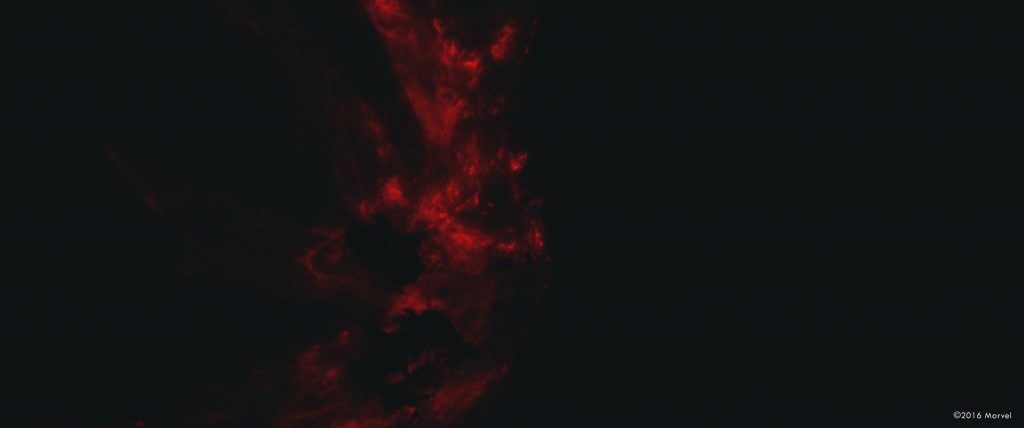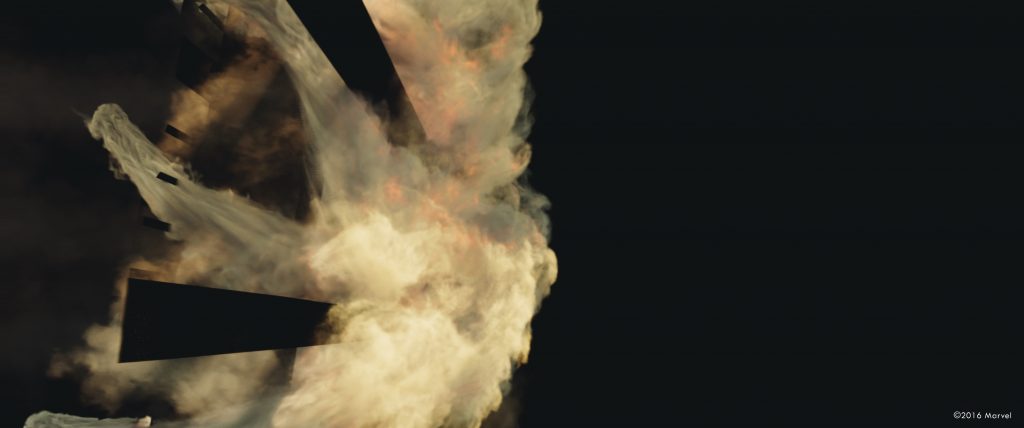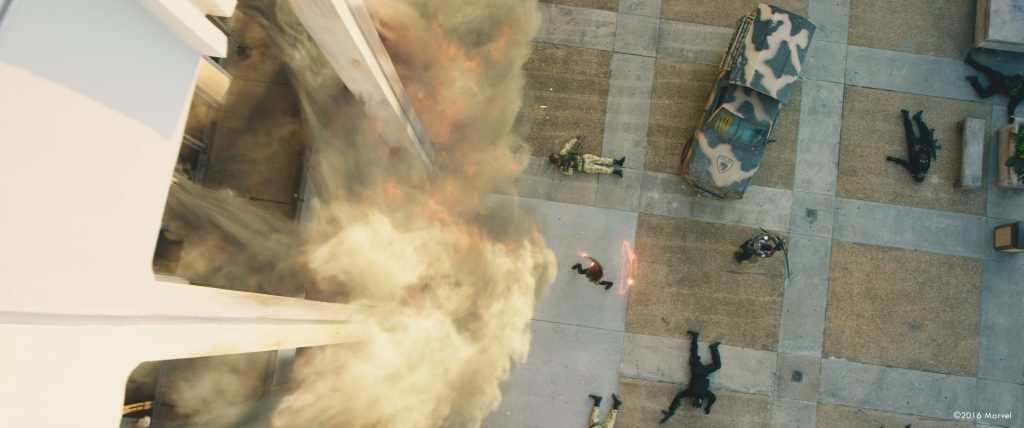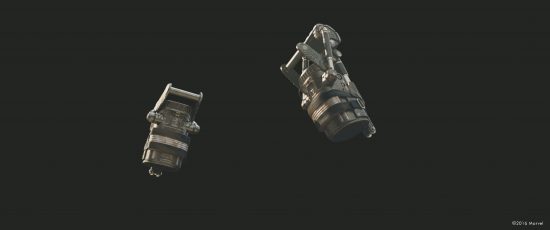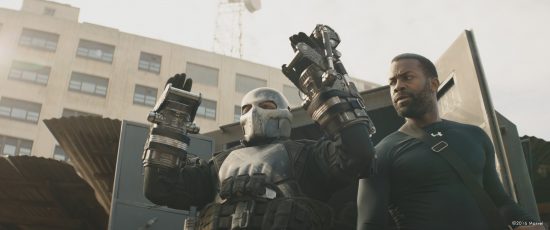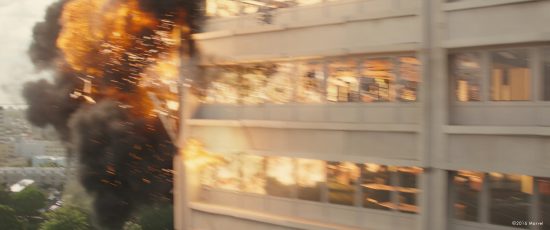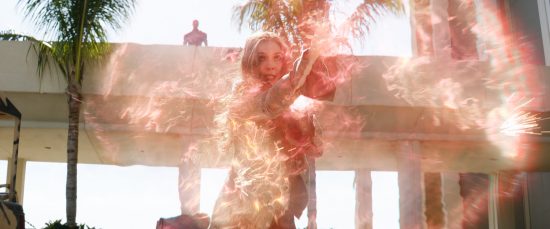Off to Africa: RISE Visual Effects Studios & Captain America: Civil War
Trevor Hogg takes a look back on the visual effects created for Captain America: Civil War by chatting with RISE Visual Effects Studios which looked after the opening African sequences…
Captain America: Civil War marked the earliest involvement of RISE Visual Effects Studios with the Marvel Cinematic Universe. “They wanted to shoot in Germany and could take advantage of the local tax incentives with Trixter and us having worked on pretty much on every Marvel movie that has been around for the last five or six years,” states Florian Gellinger who owns the boutique company located in Berlin and also serves as a visual effects supervisor. “The Russo Brothers have this raw action movie approach that is almost like Heat by Michael Mann. The imagery is not as colourful. It’s more real world-based.” Supervising the visual effects vendors was Dan DeLeeuw who developed extensive previs and postvis. “For our first iteration of a shot we usually stuck close to the postvis to make sure that the timing in editorial worked and then we started making alterations. For example, when Scarlet Witch is flying through the air as a digital double you don’t do cloth and hair simulations in postvis which can change the timing in the animation. You try to tell the same story but cooler.”
“We redesigned all of the little elements and plates of the wings of Falcon in 3D so once we had something that they signed off on we could start rigging and animating them,” states Gellinger who was provided with the Falcon model created by ILM for Ant-Man. “They wanted to have more filament elements moving around in the wings to make them look technologically advance. Falcon was not one of the main characters in Ant-Man so the wings have bigger pieces coming together. But now we have these extreme close-ups of him using them as a proper shield against machinegun fire. The wings got a lot more complex halfway through the post-production schedule as it was decided that they should be more like cloth on a steel frame. We needed additional controls to bend the individual pieces according to the wind friction that they get. The wings were always rendered with full subsurface scattering so that you have the additional softness of everything that was shining through.”
“The problem with magic of the Scarlet Witch was making painting concepts work when it’s something that needs to be seen in motion,” notes Florian Gellinger. “This wispy stuff is vague and can be anything. Dan gave us clear directions. Scarlet Witch is not a sorceress from a fantasy film; she manipulates chance so that everything happens according to her will and sometimes it goes wrong. The ‘wiggly woo’ couldn’t move too faraway from the look established in Avengers: Age of Ultron so we went for something that was a mixture of particulates being sucked into a hot core on the palm of her hands and some old elements.” Daytime shots with bright blue skies in a sunlit environment made the red tinged magic hard to standout. “We made it less transparent and even graded down the background behind the wiggly woo slightly in some shots. It’s a shot-by-shot decision on how much you want to dial it in.”
Along with redesigning the wings of Falcon and the magic of Scarlet Witch, RISE Visual Effects Studios was responsible for the opening 15 minutes of Captain America: Civil War. “The café with Scarlet Witch and Black Widow was shot for real in a market place set that they had built in Atlanta,” explains Gellinger. “They’re on a surveillance mission looking at a police station that we shot as a background plate in Puerto Rico and made it look like Lagos, Nigeria. Captain America is standing in a hotel room that was shot on green screen looking at the whole scene. Falcon stands on the edge of a skyscraper rooftop staring down and that was a partial set build with a bit of skyscraper edge. We did the rest as a 270 degree full CG environment with cars, crowds, and blowing palm trees. You see the CG Falcon skydiving down and barely opening his wings before he touches the ground; he also fires up something new which is the Redwing drone which comes from his backpack and does some of the surveillance for him.”
“The Redwing was built by Legacy as a prop that would be stuck into the frame as a shading reference for us,” states Florian Gellinger who created a CG version that had proper exhaust fumes and allowed for the wings to extend when it comes out of the backpack. “It has a couple of rail guns coming out of the wings when it shoots down some of the mercenaries in the market and has a camera that is moving for surveillance reasons in the front portion. All of that needed to be designed.” The miniaturized rail guns had certain features removed that would make them look too heavy and big. “The paint is like car paint with a little chrome. In prominent areas we have the logo of Stark Industries.”
“For the road that leads towards the Institute of Infectious Diseases where the heist takes place, we photographed and LiDAR scan a whole street in Puerto Rico,” explains Gellinger. “We swapped out all of the Spanish signs for approved signage that Disney had cleared for us and built a 3D asset. The bad guys have hijacked a garbage truck which has been loaded with explosives. The Redwing drone keeps an eye of where it’s going while the others try to get there as fast as possible. All of those scenes were shot with empty roads in Puerto Rico and we populated them with CG cars, CG people walking around, and a CG garbage truck. The only thing that we took away from the visual research of Lagos was about 80 per cent of the cars on the road are taxis. They’re old European vehicles, like Mercedes and Volkswagen, mostly painted yellow. There are also a lot of satellite dishes, and rusty ACs on the rooftops.”
“The attack on the Institute for Infectious Diseases where the garbage truck hits the front gate they did for real,” states Florian Gellinger. “The vehicle was flipped upside down with a liquid nitrogen canon. We painted out the stunt rigging, wires, attached cameras and additional camera cars. We roto the environment and replaced the Puerto Rico buildings with Nigerian signage. We put these security rams that extend from the ground to protect the buildings from terrorist threats. The real garbage truck hits a CG security barrier, gets deformed, and makes the CG road around it crumble. When the steel security barrier hits the ground it has sparks coming off of it. For the set build that they had for the gate we did additional smoke simulations and dust for the bits and pieces breaking apart to give you more volumetrics around the garbage truck.”
“The whole environment outside of the courtyard limits was all replaced with a 270 degree environment,” remarks Gellinger. “Parts of the building façade are from the Atlanta Civic Center. We made a couple windows smaller to stay true to the interior set builds that they had at Pinewood. The mercenaries shoot CG gas grenades with trails into the building. The interior shots were shot with green screen on-stage. We put on the corresponding exterior, the CG smoke grenades, and did pyro simulations. They storm the building and we see the bad guy Crossbones for the first time. Crossbones has a hydraulic punching gauntlet which can go from his lower arm over his fists and extend another foot or so once he touches something with them. Those things had to be built and we had to replace all of his arms below his elbows on every shot that you see the punching gauntlets move. We had to replace the prop on most shots.”
Scarlet Witch, Black Widow, Falcon and Captain America attempt to thwart the heist as it is taking place. “The only one who was still the way she was shot was Black Widow,” reveals Florian Gellinger. “We did this Widow Bite that was established in Winter Soldier where she throws these little buttons and once they hit you there are these electric arcs running all over your body. Simulations of the lightning running over the surfaces of the mercenary digital doubles were done in Houdini and were also used for relighting the surfaces. Scarlet Witch pulls poisonous gas out of the IFID building which was shot inside by the mercenaries using her magic and that’s all complicated Houdini pyro simulations with art directed gas. You have to imagine that the room is filled with CG gas, you’re collecting the gas into tentacles that apply pressure to the glass so that it bends and shatters, the gas goes outside in these tentacles that come out of the building from everywhere wrapped inside a shell of wiggly woo, and the gas is collected into one huge ball that she throws up into the sky in a tornado so it doesn’t harm anyone!”
“After the IFID heist is over Crossbones escapes and shoots his rocket launcher at Captain America a couple of times while he is running through a hallway with desks and debris flying all around,” remarks Florian Gellinger. “The chase continues in the Lagos market where the mercenary truck got a CG grenade launcher in all of those shots. The climax is when the Crossbones pulls the trigger on his C4 belt and blows himself up in order to kill everybody around him. Scarlet Witch contains the explosion in the wiggly woo and throws him up into the air, releases the explosion that blows up into the skyscraper right next to the market, and you see all of the windows blowing out and the fire going through the floor and the office furniture being blown around.” Gellinger explains, “We started off with a pyro simulation for the explosion itself with individual pieces extending out of the main fireball and then having them pushed back by force. There is a secondary layer of wiggly woo as a particle simulation with little solar flares erupting from the enclosure so that you can see how much strain is on it.”
“For modelling and texturing we’re using mostly Maya, ZBrush and Mari,” remarks Florian Gellinger. “Compositing is all Nuke based and then for 3D rendering, lighting and simulations we’re only using Houdini. Because we’re doing effects work in the same package as we’re doing the lighting and shading wherever we blow something up we can use the light coming off of the explosion to light our scene which is a huge benefit.” The biggest challenge was the variety of work spread over 300 shots. “We not only did full screen digital characters but also design heavy simulations like the wiggly woo, art directed gas that behaves like tentacles, huge explosions, and environment work for four different setting which is so subtle that I hope that nobody will even notice.”
Imagery courtesy of Disney, Marvel Studios & RISE Visual Effects Studios.
Many thanks to Florian Gellinger for taking the time to be interviewed and for more information visit the official website for RISE Visual Effects Studios.
Trevor Hogg is a freelance video editor and writer who currently resides in Canada; he can be found at LinkedIn.
Next PostPrevious Post(adsbygoogle = window.adsbygoogle || []).push({});

